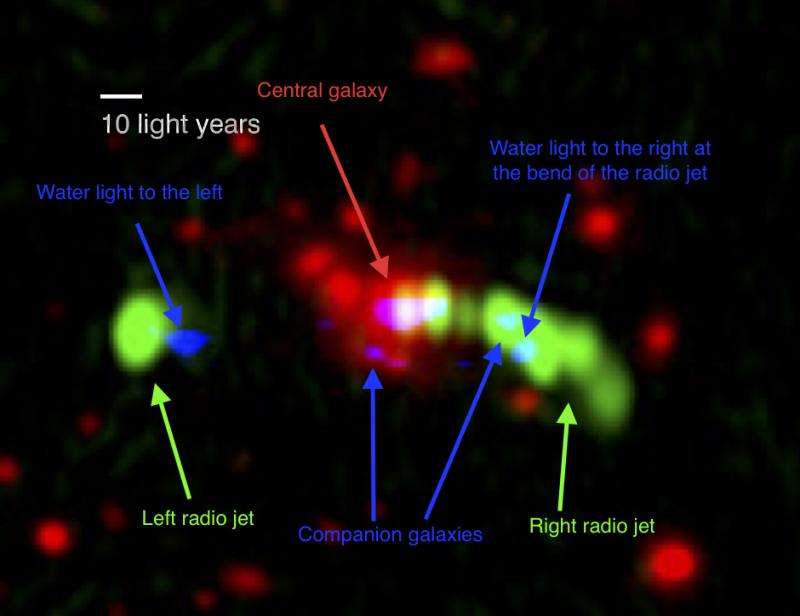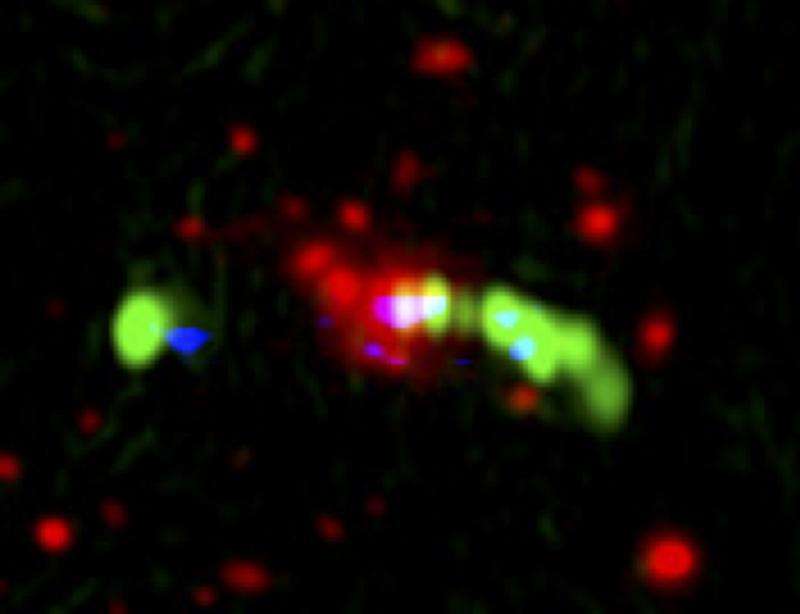ALMA discovers dew drops surrounding dusty spider's web

Astronomers have spotted glowing droplets of condensed water in the distant Spiderweb Galaxy – but not where they expected to find them. Detections with the Atacama Large Millimeter/submillimeter Array (ALMA) show that the water is located far out in the galaxy and therefore cannot be associated with central, dusty, star-forming regions, as previously thought. The results will be presented at the National Astronomy Meeting 2016 in Nottingham by Dr Bitten Gullberg on Friday 1st July.
"Observations of light emitted by water and by dust often go hand-in-hand. We usually interpret them as an insight into star-forming regions, with the illumination from young stars warming dust particles and water molecules until they start to glow. Now, thanks to the power of ALMA, we can—for the first time—separate out the emissions from the dust and water populations, and pinpoint their exact origins in the galaxy. The results are quite unexpected in that we've found that the water is located nowhere near the dusty stellar nurseries," explained Dr Gullberg, of the Centre for Extragalactic Astronomy, Durham University, UK.
The Spiderweb Galaxy is one of the most massive galaxies known. It lies 10 billion light-years away and is made up of dozens of star-forming galaxies in the process of merging together. The ALMA observations show that the light from the dust originates in the Spiderweb Galaxy itself. However, the light from the water is concentrated in two regions far to the east and west of the galaxy core.

Gullberg and her colleagues believe that the explanation lies with powerful jets of radio waves that are ejected from a supermassive black hole at the centre of the Spiderweb Galaxy. The radio jets compress clouds of gas along their path and heat up water molecules contained within the clouds until they emit radiation.
"Our results show how important it is to pinpoint the exact locations and origins for light in galaxies. We may also have new clues to the processes that trigger star formation in interstellar clouds," said Gullberg. "Stars are born out of cold, dense molecular gas. The regions in the Spiderweb where we've detected water are currently too hot for stars to form. But the interaction with the radio jets changes the composition of the gas clouds. When the molecules have cooled down again, it will be possible for the seeds of new stars to form. These "dew drop" regions could become the next stellar nurseries in this massive, complex galaxy."
More information: ALMA Finds Dew Drops in the Dusty Spider's Web, Bitten Gullberg et al, February 2016, Astronomy & Astrophysics: arxiv.org/pdf/1602.04823v1.pdf
Journal information: Astronomy & Astrophysics
Provided by Royal Astronomical Society




















